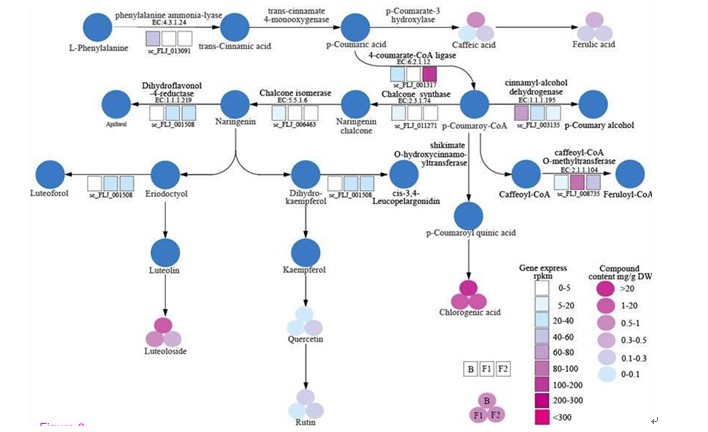Many plants have been used as traditional Chinese medicine to treat various diseases for thousands of years. However, not many Chinese medicine plants have been deeply studied using modern genetic and molecular tools. Recently, Professor YU Jun and his team at Beijing Institute of Genomics (BIG), Chinese Academy of Sciences (CAS), analyzed the transcriptomes and metabolic pathways of Flos Lonicerae Japonicae (FLJ or Lonicera japonica Thunb) to evaluate its active medicinal compounds. FLJ is used as a herbal medicine with anti-inflammatory effect, but the quality is rather inconsistent and largely due to its uncharacterized active compound content. To study the variable medicinal effects, scientists at BIG assessed transcriptomic differences between FLJ and L. japonica Thunb. var. chinensis (Watts) (rFLJ) using RNA-seq method. During the study, they have not only provided an initial description of the expression profiles of FLJ flowers, but also identified the enzyme pool which can be used to evaluate FLJ quality in future studies. The scientists have also examined metabolic pathways involved in processing active medicinal compounds to the expressions of their catalytic enzymes. The evolutionary analysis has revealed specific functional divergence of orthologs and paralogs, which lead to variation in gene functions that govern the profile of active compounds. BlastX analysis result of contigs in FLJ and rFLJ with all non-redundant (NR) database in Genebank. (Imaged by YUAN Yuan) Paper link: http://www.biomedcentral.com/1471-2164/13/195/abstract Contact: Prof. YU Jun Email: junyu@big.ac.cn 
